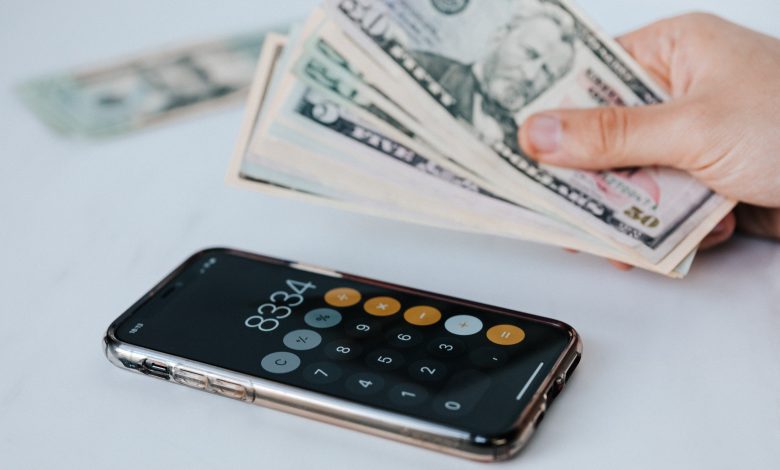APR vs Interest Rate: What’s the Difference?

Lenders and financial firms issue loans/credit card to consumers in order to make a profit. In other words, they will give you funding in exchange for a certain cost, which is the interest rate. However, things aren’t as straight forward as they look. While the interest tells you how much you will pay each issuer for a loan/credit card, the rate doesn’t include commissions, fees, and other expenses. Because of this, the interest rate, in itself, is not fully accurate. To get a clear picture of how much a credit card or loan costs, you should compare the APR vs interest rate.
Equally as important are the specific fees that real estate agents, car dealerships, and credit card issuers individually charge. In fact, some of them may even charge you several types of APRs or interest rates. Borrowers and credit card users who weigh in these costs will get a crystal clear idea of what they may end up paying.
APR vs Interest Rate: Fees and Loan Periods
Unlike the interest rate, the APR accounts for some (but certainly not all) of the fees that lenders and/or credit card issuers will charge. However, loans and credit cards also take separate factors into consideration. Financial institutions, for instance, index their credit cards’ APR against the U.S Prime Rate. In the same vein, consumers use credit cards and loans in an entirely different way. That is to say, you only need to make a credit card payment if you use it. An auto loan or a mortgage payment, meanwhile, is due every month.
Loans and Financing
When it comes to loans, the primary differences between the APR vs interest rate are the fees. To put it another way, the APR shows borrowers how much they will pay in total, which includes the interest rate alongside commissions, fees, and other charges. This allows them to accurately compare the offers of several lenders. The following example will illustrate. A borrower is looking for a $20,000 personal loan. The first bank they talked to charged 7.5% in interest, while the second firm’s rate was 9%.
Initially, the former’s offer may appear financially sound, especially since they’re asking for a lower interest rate on the same loan amount. Yet this doesn’t account for commissions and other charges. The first bank’s fees added up to $900, in addition to the 7.5% in interest (which is the equal to $1,500). In total, the borrower would pay $2,400. The other firm, meanwhile, only charged a $500 commission. When we add it to the 9% interest rate (or $1,800), the borrower’s overall cost is $2,300. The APR reflects that as a percentage of the total loan amount.
When we account for the said fees, the first lender’s APR vs interest rate are 12% vs 7.5%. Even though the second firm’s interest rate is 9%, they have a lower APR at 11.5%. Therefore, the borrower would pay more money if they got a loan from the first lender, despite that they offered a reduced interest rate. Keep in mind that this is a simple calculation. The actual rates also take into account the frequency of payments and the length of the loan. Nevertheless, this is another difference between the APR vs interest rate. While the former is only expressed as an annual rate, the interest could apply on a weekly, monthly, or yearly basis.

Credit Cards and APR
Credit card issuers set their own interest rates, but they largely tie their APR to the U.S Prime Rate. The Prime Rate is established by the federal government. Because of this, credit card issuers have limited room to offer discounts and similar incentives. Nonetheless, financial firms will provide consumers that have good credit with a lower interest rate. To calculate a credit card’s APR, simply add the current U.S Prime Rate to the issuer’s interest rate. For example, if the Prime Rate is 5% and the bank/financial institution’s interest rate is 10%, the credit card has an APR of 15%.
Above all else, banks may charge users several APRs at the same time. The ‘purchase APR’ applies to certain credit card transactions, while users incur the ‘penalty APR’ when they make a late payment. Each financial firm sets its own interest rates, transaction costs, and fees at their discretion. Just as with the initial interest rate (which is added to the Prime Rate), credit card issuers and consumers can control these expenses. The latter may minimize their APR by managing their spending and budgeting.
Fees: What Is and Isn’t Included
Loans and APR
It is important to keep in mind that an auto lender, home equity provider, and personal loan issuer have separate types of fees. Real estate agents and car salespeople, for instance, charge different commission rates (as a percentage of the home/vehicle value). Installment and personal loan issuers, meanwhile, require borrowers to pay relatively more in miscellaneous fees. Therefore, before taking out a loan, consumers should weigh these factors based on the specific type of funding that they need. In fact, many lenders will give you a discounted interest rate and minimal fees if you have a good credit score.
Credit Card Fees
Credit card issuers don’t include certain expenses in their APR. For example, their advertised APR and fees may not take late penalties and transaction costs into consideration. This is because these expenses can vary from month to month and person to person. Moreover, just because some credit card issuers have several APRs doesn’t mean that all of them do. Yet this doesn’t diminish or minimize the importance of a card’s main APR. Instead, credit card shoppers should weigh each issuer’s fees, alongside their respective APRs, before they decide to open an account.
This process is comparable to that of obtaining a loan. All types of lenders (including auto, home, and business loan providers) will also charge you several fees. They may not necessarily include them in the APR. For instance, some borrowers pay their property taxes and homeowners insurance alongside their monthly mortgage payment. The lender’s APR, however, certainly doesn’t reflect the said expenses. Therefore, shoppers should always study these factors before deciding on a loan or a credit card.

What the APR Tells Us
In short, loan borrowers and credit card users will learn a lot about their costs when they compare the APR vs interest rate. The APR includes factors that are out of our control, such as the prime rate, commissions, and industry-specific fees. The applicant’s credit score, on the other hand, directly influences the interest rate. Adding up all of these different fees is certainly tedious and, at times, confusing. However, paying more than what you initially expected is even more problematic.
At the end of the day, your total costs are what matter most, regardless of how they’re expressed (percentage vs dollar amount) or when you pay them (monthly, annually, or based on usage).



